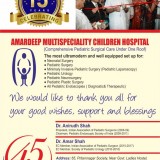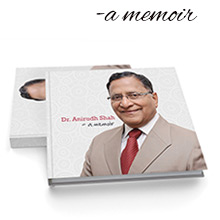INFORMATION AVAILABLE IN ENGLISH, GUJARATI AND HINDI
Cleft Palate
A cleft palate is a defect or gap in the roof of the mouth. It can involve some or all of the part of the palate.
A cleft palate can occur separately or together with a cleft lip.
What causes a cleft palate?
A cleft palate occurs during the first weeks of development in the womb. The palate is initially formed in two halves, lying either side of the tongue. Around the seventh or eight week the palate joins. This joining process may fail completely or stop at any point, resulting in a defect (cleft).
In any unaffected family, the chance of cleft lip / palate is one in 700. If one parent or child has a cleft, the chance of cleft lip / palate in future children is one in 25 to one in 40.
What are the signs and symptoms of cleft palate?
The main symptoms are the effect the condition has on hearing, feeding and later speech.
If a baby has an isolated cleft palate, they might have difficulty feeding properly because they can’t suck very well. The baby is unable to create a seal enabling them to create suction to get milk from the breast or bottle.
Some special bottles are used to help babies with isolated cleft palates feed but difficulty with feeding can mean the baby gains weight more slowly than is meant to happen over the first few months.
Other symptoms can include hearing problems as children with the condition are more at risk of glue ear. This can also lead to ear infections. As the palate plays an important role in speech it is important the cleft is repaired with surgery to reduce speech problems when the child is older.
How is a cleft palate normally diagnosed?
A cleft palate will be seen once a baby is born and is usually diagnosed at the time of the routine newborn baby check.
How is a cleft palate treated?
Treatment involves surgery. Most children require just one operation, but sometimes other operations may be needed to ensure the best possible speech outcome.
An operation to repair a cleft palate usually takes place when a child is between nine and 12 months of age. The operation involves joining the tissues that have not joined before birth.
What happens next?
In the vast majority of cases, surgery is very successful. Most babies born with a cleft palate will lead totally normal lives.
Children with a cleft palate will be monitored closely as they grow and develop. This will include their hearing and speech.
Most children are able to develop good speech and language skills following surgery. But sometimes a repaired cleft palate can make it difficult for a child to pronounce some sounds clearly. This may affect speech quality making it sound a bit ‘nasal’. A speech and language therapist will be able to help. However, most children will be able to speak normally.
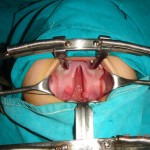
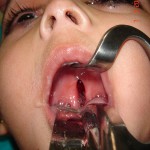
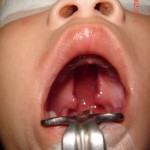 Cleft Palate
Cleft Palate
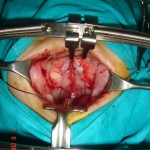
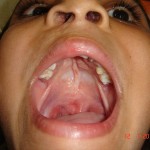 After Repair
After Repair
GUJARATI
કપાયેલો હોંઠ અને ફાટેલુંં તાળવું
કપાયેલો હોંઠ અને ફાટેલુંં તાળવું દર છસો એ એક બાળકમાં જાવામાં આવે છે. ઘણીવાર બાળકનો ફક્ત હોંઠ જ કપાયેલો હોય છે. જ્યારે ઘણીવાર હોંઠ, તાળવું અને પેઢું ત્રણે કપાયેલા હોય છે. માતા અથવા પિતામાં જા કપાયેલો હોંઠ અને ફાટેલું તાળવું હોય તો તેમનાં બાળકોમાં પણ આ ખોડ આવવાની શક્યતા બીજા બાળકો કરતાં વધારે રહેલ છે. ફાટેલું તાળવું હોવાથી બાળક સ્તનપાન નથી કરી શકતું તેથી આવા બાળકોને એક વિશેષ પ્રકારની બોટલ અથવા વાટકી અને ચમચીથી દૂધ પીવડાવવું જાઈએ. સ્તનપાન કરાવવાથી અથવા સાદી દૂધની બાટલીઓથી ઘણીવાર બાળકને આંતરાશ જઈ બાળકની જિંદગીને જાખમ પણ ઊંભું થતું હોય છે. કપાયેલા હોંઠનું આૅપરેશન ત્રણ મહિનાની ઉંમરમાં કરવામાં આવે છે. ફાટેલા તાળવાનું આૅપરેશન નવ થી બાર મહિનાની ઉંમરમાં કરવામાં આવે છે. ફાટેલા તાળવાના આૅપરેશન પછી બાળકોને ઘણીવાર વાંકાચૂકા દાંતની સારાવાર કરવાની જરૂર પડે છે. સ્પીચ થેરાપીની પણ જરૂર પડી શકે છે. •
HINDI
कटा होंठ और फटा तालु
कटा होंठ और फटा तालु हर ६०० में से एक बच्चे में देखा गया है। कई बार बालक का केवल होंठ ही कटा हुआ होता है। जबकि कभी-कभी होंठ, तालु और मसूड़े तीनों ही फटे हुए होते हैं। यदि माता या पिता में से किसी को भी कटे होंठ या फटे हुए तालु की समस्या है तो, उनके बच्चों में अन्य बच्चों के अपेक्षा यह दोष होने की संभावना अधिक रहती है। कटे होंठ या फटे तालु के साथ जन्मे शिशु को स्तनपान करने में तकलीफ होती है। अतः ऐसे बालक को विशेष प्रकार की बोतल या कटोरी-चम्मच से दूध पिलाना पड़ता है। सामान्य स्तनपान अथवा दूध की बोतल से दूध पिलाने पर कई बार दूध बच्चे के फेफडे में जाने की संभावना है और बच्चे की जान को खतरा पैदा कर सकता है। कटे होंठ का ऑपरेशन तीन महीने की उम्र में किया जाता है। फटे तालु का ऑपरेशन नौ से बारह महीने की आयु में किया जाता है। फटे तालु के कारण कई बार दांतों का उपचार अर्थात टेढ़े-मेढ़े दांतों के उपचार की आवश्यकता होती है। स्पीच थेरापी की भी आवश्यकता हो सकती है।•



